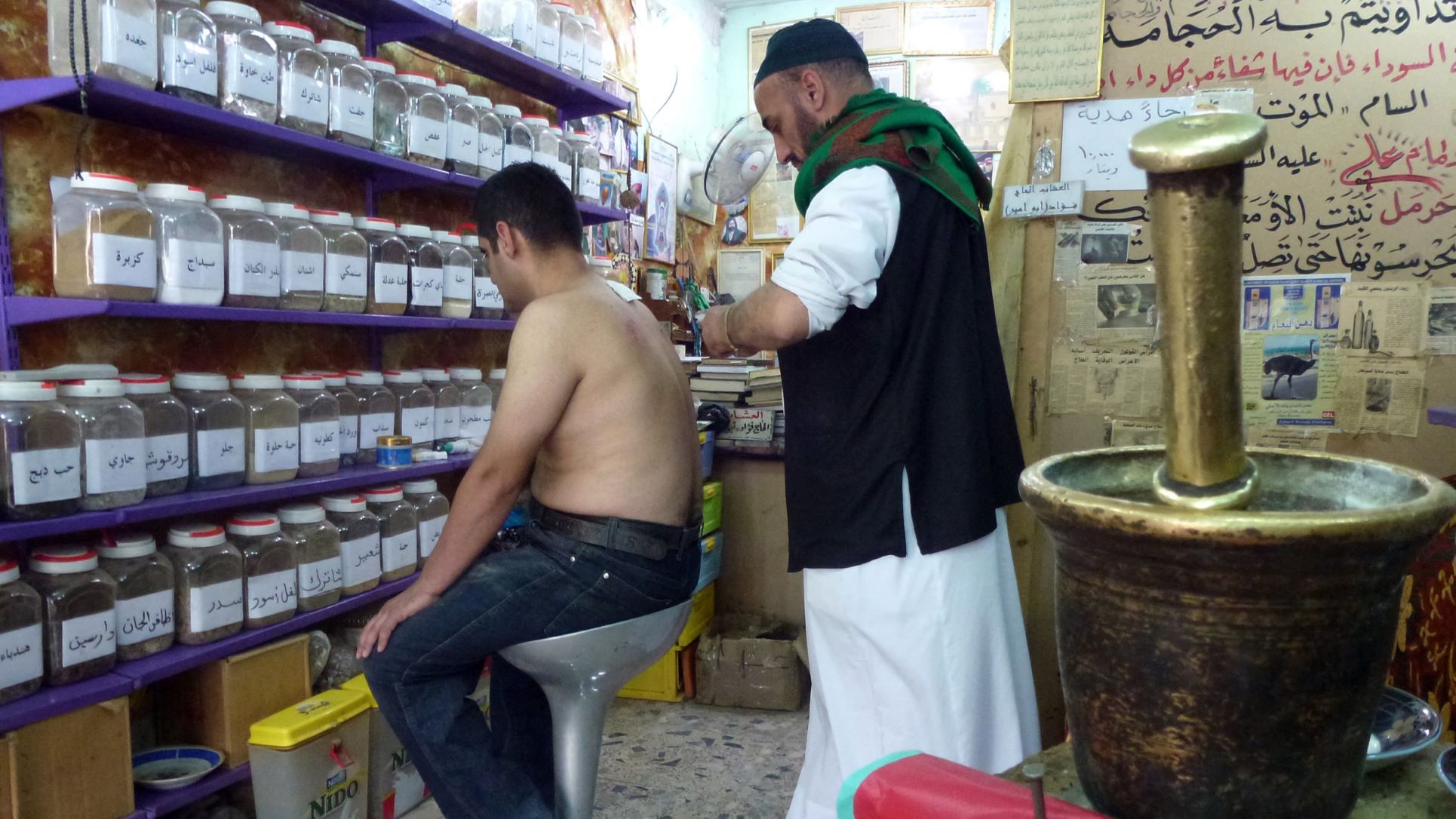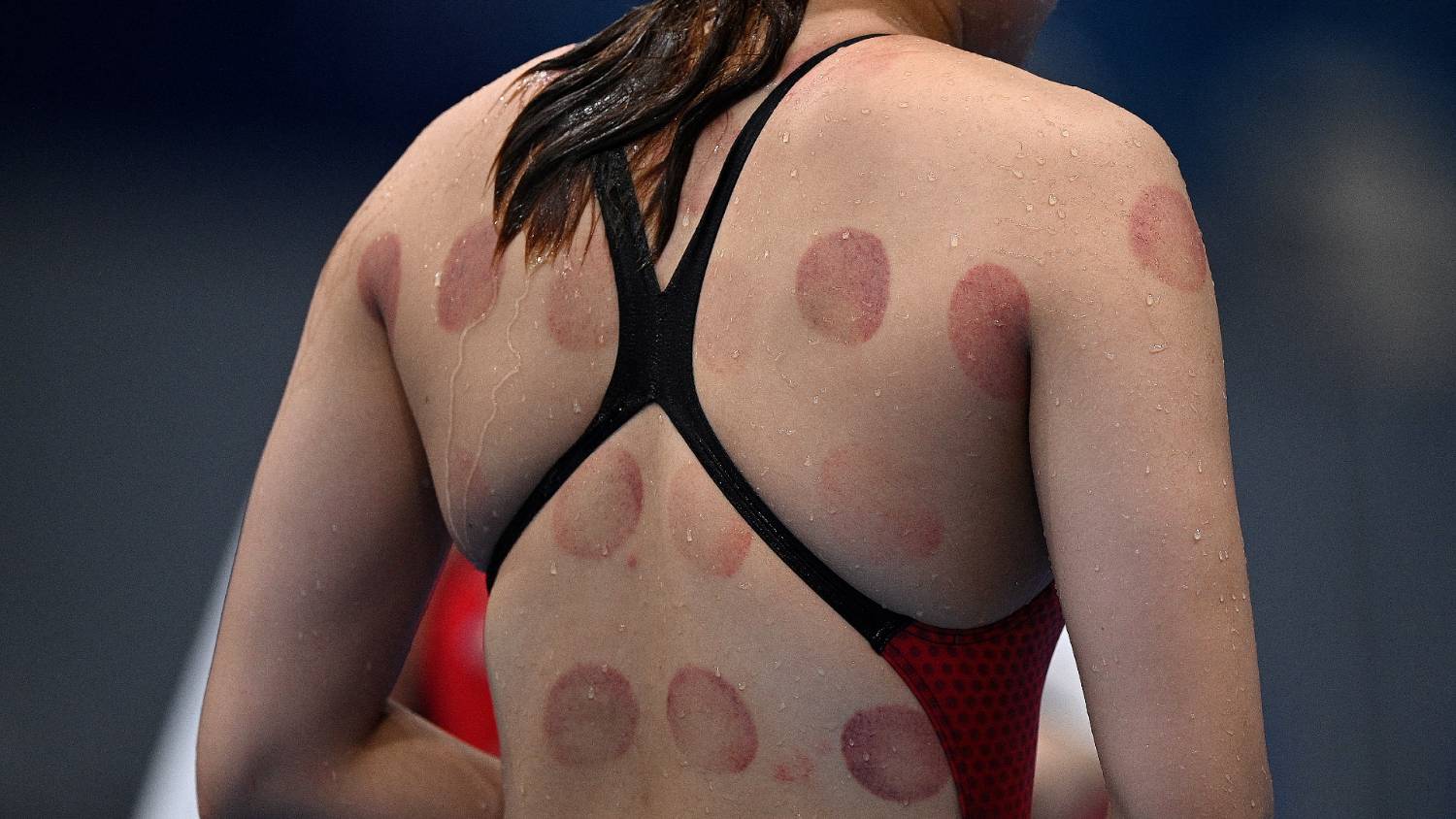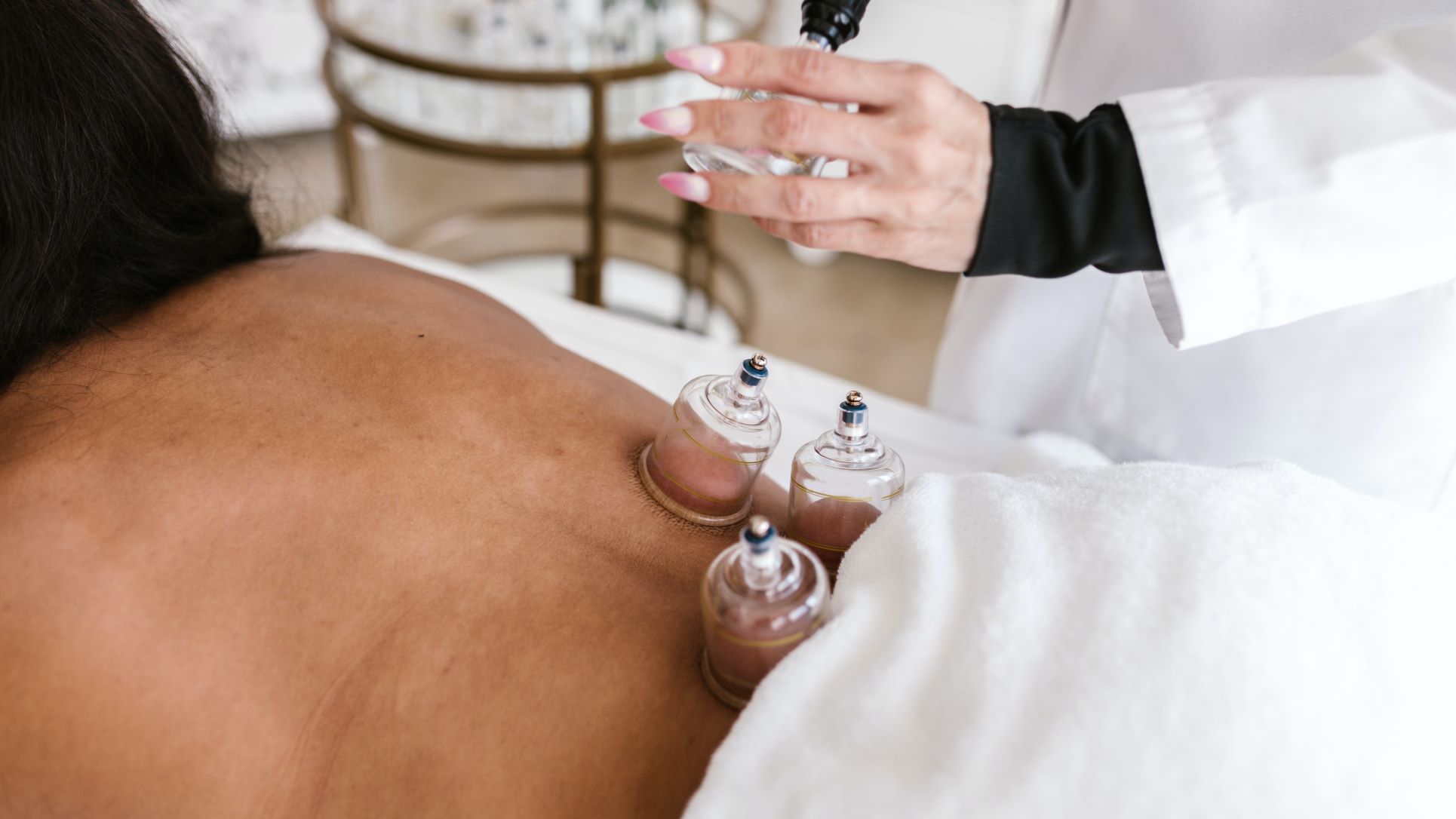What is cupping? The alternative medicine popular with athletes

Swimmers gliding through the water in the 2022 Commonwealth Games in Birmingham have been wowing spectators with their flawless movement.
But the more curious may also notice the bruise-like perfect circles dotting the backs and upper arms of several athletes.
The marks are from an ancient healing practice, popular in the Middle East and Islamic world, known as cupping, or hijama in Arabic. The word comes from the Arabic root hajm, which means sucking and expansion.
First popularised among global audiences by US Olympic swimming champion Michael Phelps at Rio 2016, one form of hijama involves the "sucking out" of blood, using suction cups attached to the body. Those who extol its benefits point to relief from nerve pain, migraines and back problems, among other upsides.
Stay informed with MEE's newsletters
Sign up to get the latest alerts, insights and analysis, starting with Turkey Unpacked
There are even hadiths, or narrations attributed to the Prophet Muhammad, in which he recommends hijama as a treatment for diseases.
Nevertheless, despite its popularity, the benefits of hijama remain unproven scientifically.
Some studies have cited improved blood flow and other benefits after cupping treatments, but the prevailing view is that such perceived impact may be the result of the placebo effect, and that there is a dearth of reliable research on the topic.
Here, Middle East Eye delves deeper into the ancient healing practice rooted in Arabia and Asia, and now increasingly popular among athletes.
The two types of cupping
There are two main types of cupping: dry and wet. In dry cupping, heated sterile cups are warmed and placed centimetres apart on the area to be treated. It is said that the therapy increases blood flow, reduces inflammation and boosts the immune system.
For athletes, the treatment is thought to increase their pain threshold and help muscles recover quicker after exertion.
The back is the most popular place to apply the cups, but they can also be used on other areas, including legs, arms and even the face.
“If you think about the physiology of the human body, the back has the least amount of fat; it’s leaner, and an easy access point to all of the organs that are housed in our torso," Naeema Khan, who has been working as a hijama therapist for almost 10 years, tells Middle East Eye.
The heated cups create a vacuum-like motion, gently sucking and raising the skin, feeling like a soft pinch. The strength of suction can be varied according to need.
The cups remain on the body for five to 15 minutes, and as the skin is lifted the blood vessels are thought to expand, stimulating both muscles and blood flow.
“It’s like when the body has been injured, its inflammatory response naturally kicks in, releasing antibodies to heal the area,” says Khan. “Cupping serves a similar process.”
The suction from the cups is what creates the now recognisable bruise-like circular effect.
In wet cupping, scratches are made on the surface of the skin before cups are placed on the area being treated, in a process also known as blood letting.
It’s this method that is referred to as hijama, and it is still practised in many parts of the Arab and Islamic world.
Other modifications to the treatment including massage cupping, where oil is applied and cups are manoeuvred across the body in a massage-like motion; and flash cupping, whereby heated cups are quickly and repeatedly applied to targeted areas.
How old is cupping?
The earliest references to cupping come from Ancient Egypt, where the procedure was first referred to in the historic medical text known as the Ebers Papyrus. Dated to 1550 BCE, the text refers to the wet form of the treatment, which is described as being able to “remove the foreign matter from the body”.
Before 400 BCE, Greek historian Herodotus refers to both wet and dry cupping as treatments for digestive issues and headaches. At around the same time, Greek physician Hippocrates suggested its use for the treatment of gynaecological ailments as well as respiratory illnesses.
Other early references to cupping appear in The Mawangdui Silk texts in China, a collection of ancient medical and physiological writings dating back to 168 BCE. The fourth century CE Taoist alchemist Ge Hong also mentions the practice.
In Chinese medicine the focus of cupping lies in energy channels known as meridians. Cupping is used to stimulate specific meridians in the body to help clear blocked "qi", or good energy.
As mentioned earlier, Islamic hadiths advocate the use of cupping for all manner of illnesses and for the prevention of disease.
"There is a cure provided in three substances – a drink of honey, a cut with a knife for cupping, and cauterising by fire. I forbid my ummah [community] from cauterising by fire," the Prophet Muhammad is reported to have said in one hadith.
The practice of cupping in Islam comes with some dietary recommendations, including fasting before treatment and the avoidance of milk-based products. This was recommended as an aid to recalibrate the body's functions.
Ibn Sina and cupping
Arab and Muslim physicians, including the renowned Persian Ibn Sina (980-1037), recommended the practice in his book Kitab Al-Qanun, or The Canon of Medicine.
Ibn Sina, like other Muslim scholars at the time, believed that physical and spiritual health went hand in hand.
Cupping was used to treat skin ailments, blood disorders and fertility issues. As a preventive treatment it was used to release toxicity in the body, be it bad blood or something more sinister, like the effects of black magic, or evil spirits sometimes referred to as jinn.
Referring to the practice and its link to the lunar cycle, Ibn Sina wrote: “Cupping is not preferred in the beginning of the month, because the body’s various conditions will not be agitated then, nor is it preferred in the end of the month, because by then the conditions would have decreased. Cupping is preferred in the middle of the month when the substances [blood] accumulate and become agitated."
Hijama is still often advocated for days when the moon is full, sometimes referred to as the sunnah days, as these were the days recommended by the prophet.
“When the moon is full, it has a stronger pull on the Earth’s gravitational surface,” explains Khan.
“The same way it has an effect on the tides, pulling them in and back out again, when it’s at its fullest it can have a pulling effect on all liquids on Earth, including our blood. So while the blood is more at the surface of our skin, it’s recommended to have hijama as a release.”
Centuries after Ibn Sina, Jewish physician Moses ben Maimon, more popularly known as Maimonides (1138-1204), wrote of the practice in his book Regimen of Health, and by the 14th century it had spread to early Renaissance Italy, where it was considered a popular way to treat gout.
The British writer George Orwell received cupping as a treatment for his pneumonia when he was unwell at a French hospital in 1929. He is said to have tried both wet and dry cupping.
Animal horns and other cups
Although glass and plastic are the most popular types of cups used today, the original cups used in the therapy were made from animal horns. Hollowed horns would be used to release pus or poison using the same method. Buffalo horns are still used in some places, such as Indonesia.
Cups can also be made of rubber, bamboo, ceramic, metal and silicone, and can come in different sizes, making them suitable for use on different body parts.
Traditionally, fire was used to heat the cups to create the suction, but today hand-powered vacuum pumps are the safest method.
Is cupping safe?
Cupping therapy is not a substitute treatment for medical treatment from a doctor, and even practitioners consider it complementary therapy.
Trained and registered therapists will always ask whether a patient has any underlying medical conditions and whether they are taking any medications, before offering treatment.
Those who are pregnant or have haemophilia or anaemia should not have cupping therapy, and it should not be carried out on open wounds or fractures.
In unskilled hands, there have been incidents of skin burning when a practitioner has used cups which have been too hot.
This article is available in French on Middle East Eye French edition.
Middle East Eye delivers independent and unrivalled coverage and analysis of the Middle East, North Africa and beyond. To learn more about republishing this content and the associated fees, please fill out this form. More about MEE can be found here.










